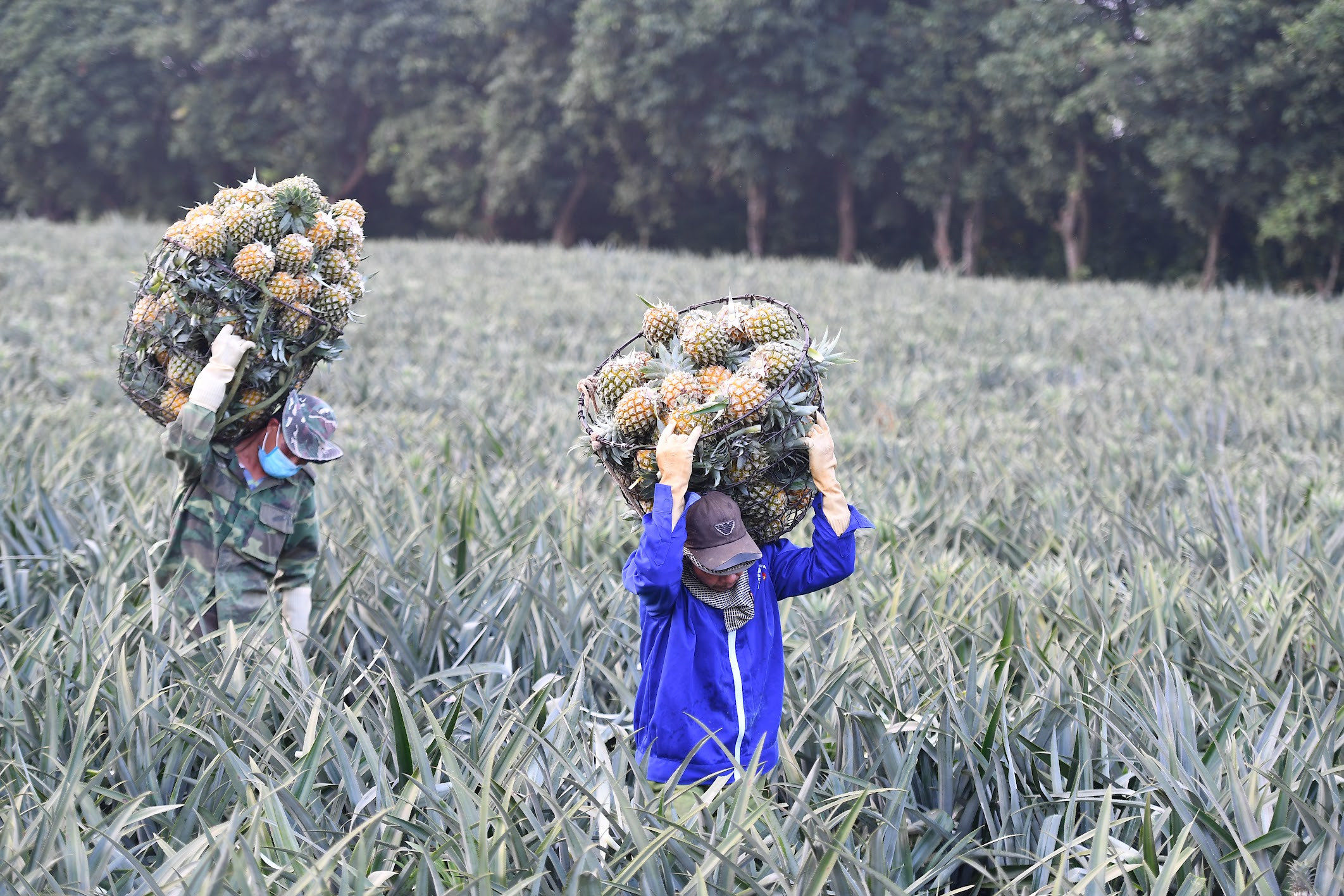
In late October, the Ministry of Agriculture and Rural Development and the General Administration of Customs of China signed a protocol on quarantine requirements for Vietnamese banana exports to China.
Previously, in July and August, Vietnam’s passion fruit and durian also received a "visa" to enter the Chinese market. Vietnam’s pomelos, after four years of negotiations, officially entered the US market in mid-October.
This value will help achieve the goal of earning $6.5 billion in export revenue from fruits and vegetables by 2030.
Fruits are key export items of Vietnam's agriculture. A decade ago, export turnover of vegetables and fruit was only $460 million. However, in 2013, they brought yearly export revenue of at least $1 billion.
In 2016, they brought in $2.4 billion and $3.15 billion in 2017. In 2019, the figure jumped to $3.7 billion.
Vegetables and fruits were among the top 3 agricultural exports, behind wood and seafood.
Vegetables and fruit exports were expected to surpass the $4 billion mark in 2020, but due to the pandemic and China adding more technical barriers, the export revenue of vegetables and fruit dropped to $3.25 billion in 2020 and then increased to $3.52 billion in 2021.
In 2022, export revenue of most agricultural products has recovered, but not for vegetables and fruit. By the end of October, the figure was $2.8 billion, down 6.5% over the same period last year.
It is estimated that this group of products will earn $3.2 billion for the year, down by $0.5 billion compared to the milestone of $3.7 billion in 2019.
Experts, businesses and officials have pointed out why Vietnam’s fruit exports have declined in recent years.
They emphasized the mindset of Vietnamese farmers who still raise output rather than quality, and prefer to sell what they have rather than market-favored products. They also prefer to sell fresh products rather than deeply processed ones.
Another reason is that Vietnamese traders and businesses prefer to export these products to China by unofficial channels rather than official channels. When China - Vietnam’s largest customer - raised standards, tightened technical barriers and restricted small-scale imports, Vietnamese fruits faced difficulty.
Experts and officials in the agriculture industry say that consumption trends in the world have changed. Customers not only require delicious and clean food, but also convenient products suitable for busy lives.
According to statistics, exports of fresh fruits and vegetables fell by 21%, while processed fruit products increased by 11% in January-August 2022.
14 fruits are key products
Ms. Nguyen Ngoc Huyen - CEO of Mia Group – said that with Vietnam’s geographical location and climatic conditions, Vietnamese fruit is much more diverse than other countries. There are specialty fruits associated with cultural and historical stories of regions.
However, the problems are a fragmented and small production scale, lack of farming standards, insufficient cooperation among related partners, and the small proportion of processed products.
“When farmers cooperate with businesses, the harvested products will be divided into many types. Ones with good appearance will be sold as fresh products and the others will be processed to create value-added products," said Huyen.
Minister of Agriculture and Rural Development Le Minh Hoan said the potential of Vietnamese fruit is huge. However, instead of focusing on output, farmers and businesses must add value to their products. Each type of fruit must be a commodity with a development strategy that meets the standards of each market.
Earlier this year, the Ministry of Agriculture and Rural Development began a pilot project to build standardized fruit material areas in the northern mountainous region and in the Dong Thap Muoi area.
Most recently, the Ministry of Agriculture and Rural Development decided to develop key fruit trees until 2025 and 2030. Accordingly, 14 species of trees with high export turnover were selected as key products.
This program aims to develop a total fruit tree area of 1.2 million hectares by 2025, with an output of over 14 million tons. Of that area, 14 key fruit trees will be cultivated on 960,000 hectares, with an output of 11-12 million tons. Fruit export turnover will be over $5 billion by 2025.
By 2030, the area of fruit trees will be 1.3 million hectares, with an output of over 16 million tons. The 14 key fruit trees will cover 1 million hectares of that area, with an output of 13-14 million tons. Export turnover will reach $6.5 billion.
Currently, most key fruit trees are in the group of products with high export turnover of Vietnam. Specifically, dragon fruit ranks first with a turnover of nearly $463 million in the first 8 months of 2022, and bananas with $237 million. Then durian ($158 million), jackfruit ($104 million), mango ($96.5 million), passion fruit ($46.4 million), lychee ($26 million), and grapefruit ($12.1 million).
Tam An